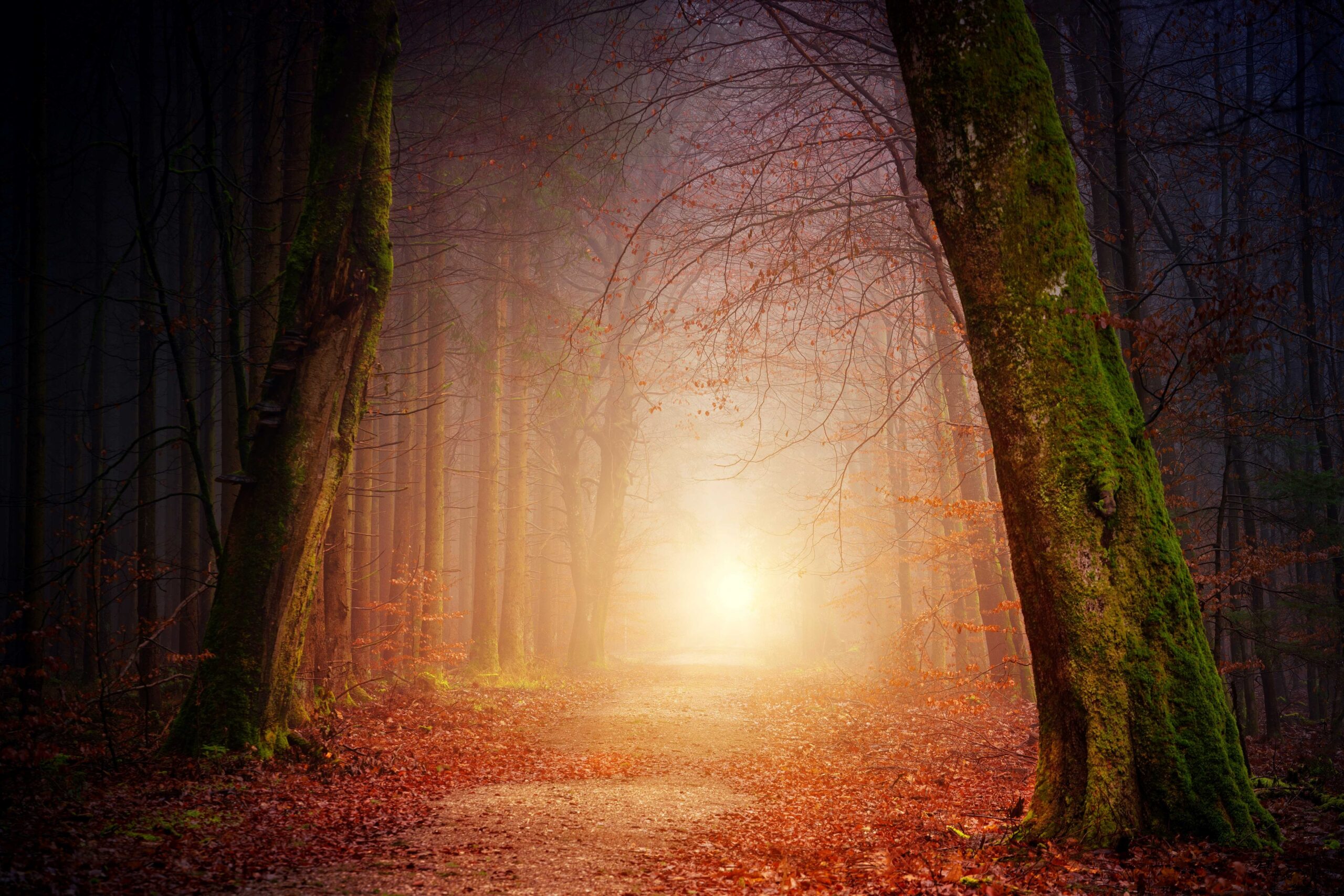
Mind Beyond Death: The Bardos
In a previous article, I summarized the introduction of the book, Mind Beyond Death by Dzogchen Ponlop Rinpoche (linked here Death) A few months ago, I wrote an article entitled “The Eight Stages of Death” about the eight stages of death talked about in The Tibetan Book of the Dead (linked here Eight Stages). In my last article, I explained why I find death such a fascinating subject (linked here Fascinating).
In this article I want to continue my exploration of the book, Mind Beyond Death, by going over the first chapter, giving an overview of the Bardos. A lot of people are confused by exactly what a bardo is, so I want to clarify that.
The Transit State
Rinpoche starts off this chapter by saying that when we embark on a long journey there is a sense of death and rebirth. Let’s say we are taking a long drive from our home to the hotel in which we are going to stay. Our home represents one moment and our destination is the next moment.
Between those two moments is the interval or the transit state. When we leave our home and start our trip, we gradually leave behind our home life and its concerns, and start to think about what might happen when we reach the hotel. There can be a sense of freedom in this “in between state” because we are free from our home responsibilities and we are not yet at our new place. We may feel a sense of freshness and an appreciation of the present moment.
We may also feel groundless and fearful because we are in unknown territory. However, if we can relax into the moment and feel supported by our new environment, then we feel more confident in navigating our way forward.
According to Rinpoche, this is very similar to what happens when we leave this life for the next one, only here it’s a journey of the mind. Here, we are leaving our body, our loved ones, our experiences and moving on to our next life. But like the journey above, we are in a transit state from one life to the next.
What is a Bardo?
In Buddhism, “bardo” means “interval”, or “in between state”. So whenever we are between two moments we are technically in a bardo state. The transit state between leaving home and arriving at work is a bardo state. Walking from our bedroom to the bathroom creates another bardo state. A bardo is any transit state between two moments. The question becomes how do we handle this transit state?
If we are more attentive in the transit states, living in the now so to say, then we become more aware of our environment and ourselves. Doing this helps us to become more aware during the bardo states beyond this life.
The more awareness we have in these transit states, the more calmly we can meet the challenges that may arise whether they be on our trip to the hotel or in the bardo states of dying and death.
Rinpoche concludes this section by saying,
“Thus, just as we would prepare for any trip—packing clothes and so forth—it is highly advisable to make good preparations for our next major journey—our passage from this life to the next.”
How Many Bardos Are There?
Tibetan Buddhism maintains there are six bardo states. Three of them deal with this life and the other three deal with death and its aftermath. The three bardos of life include: the bardo of this life, the bardo of dreams, and the bardo of meditation. The three bardos of death and its aftermath include: the painful bardo of dying, the luminous bardo of dharmata (the after death state) and the bardo of becoming (the process of being reborn).
These six bardos make up the entirety of our experience as conscious beings both in life and in death. They point to the fundamental continuity of mind through all these states. Here, life and death are just concepts that the indestructible awareness, which is birthless and deathless, has.
The Indestructible Mind
While all phenomena that we see, hear, touch, taste, or mentally conceive, rise and fall, this indestructible mind, this pure awareness endures and transcends it all. Rinpoche says,
“Although we may cling to this life and fear its end, beyond death there is mind; and when there is mind, there is uninterrupted display: spacious, radiant, and continually manifesting.”
He then counsels, that until we recognize the true nature of mind, we are not free. We get stuck in and identify with the rising and falling of all phenomena.
He goes on to say,
“Although we are never separate from this nature [the indestructible mind], we do not see it. Instead, we see who we think we are, who we believe ourselves to be. We see a self that is fabricated by thought and thus we see a fabricated world similar to a dream state.”
We think we are our ego, but certain meditation practices can help us pierce through this illusion and experience who we really are.
Bardo is the Essence of Nowness
The essence of the bardos is the experience of nowness in the gap between moments. We have to become more aware in these “in-between” states. To do that, we have to let go of the past and drop our expectations of the future, and just be in the “eternal now”.
Most of us rarely live in the present moment. Instead we are lost in our thoughts of reliving our past experiences or caught up in our expectations of the future.
We spend so much time working for and planning for the future, that we never live in the now. It is like preparing meal after meal in anticipation of our future hunger, but never actually sitting down in the now to enjoy the meal. Rather than eat now, we think, we have to make another meal to satisfy our future hunger, ignoring that we are hungry right now.
We also live in a fantasy world of the past, only our memory of these past events is not what really happened because we are different people now, so view the past from a different perspective. Each time we reflect back, there are always subtle differences because our minds are always different.
However, it is possible to gain some insight by thinking about the past, but it must be done with mindful awareness.
In Bardos, How to Handle Overwhelming Emotions of Panic and Fear
In the bardo state, we are subject to overwhelming emotions of panic and fear, so working on those emotions while we are alive is crucial. The more aware we are, the earlier we can catch these negative emotions developing in ourselves, making them easier to handle and transcend.
I can remember, years back when I took the Transcendental Meditation course. The instructor showed a slide that pointed out how emotions arise out of our unconscious. He said, the more we meditate and become aware of these rising emotions, the quicker we can detect and disarm them.
If we don’t see them coming, they can easily overwhelm us in this life and in the bardo states of dying and death. They are like a sneeze. When it progresses to a certain point, we can’t stop it.
To gain more awareness, we have to realize that whatever state we are in, that is who we are at the moment. If we are angry in the moment, that’s who we are at that moment. If we are joyful in the moment, that is who we are at that moment.
Rinpoche says these moments come and go, and the only stable thing is the indestructible mind that is the essence of who we are. When we can attain that state, then we have no more fear, not even of death which we will then realize is just another transition state.
If Don’t Get It Perfectly at Death: Don’t Despair
According to Rinpoche, if we do fail to realize the nature of mind at death, then we shouldn’t despair; we still have more opportunities in the two bardo states after death. He says,
“Further, even if we are unsuccessful during that time [at death], we will at least be able to maintain a calm and peaceful mind and accomplish a favorable rebirth as a result of our habituation to mindfulness and awareness practices.”
In other words, even if we can’t attain the level of indestructible mind, our awareness practices will still pay benefits in a better after life, and if necessary, set the stage for a more favorable incarnation in our next life.
The Six Bardo States In More Detail
Finally, I would just like to briefly outline exactly the period each bardo covers.
- The Bardo of This Life: the interval between our moment of birth and moment we meet the condition that will cause our death.
- The Bardo of Dreams: the interval between falling asleep and waking.
- The Bardo of Meditation: the interval between when our minds are resting in the state of meditative absorption or samadhi and when we come out of it.
- The Painful Bardo of Dying: the interval between the moment we meet the condition that will cause our death and the actual moment of our death.
- The Luminous Bardo of D’harmata: the interval from the moment of death to when we enter the Bardo of Becoming
- The Bardo of Becoming: the interval between the ending of the Bardo of Dharmata and being in the womb of our future parents.
To learn more about the magic of the universe: Click this link: The Magical Universe.
Image by Karin Henseler from Pixabay




